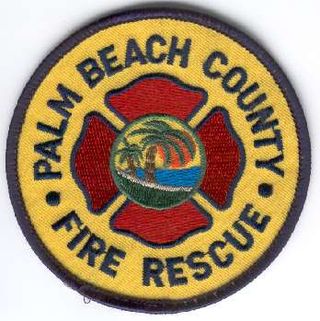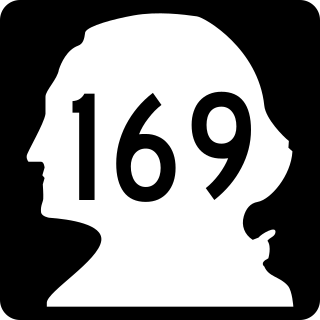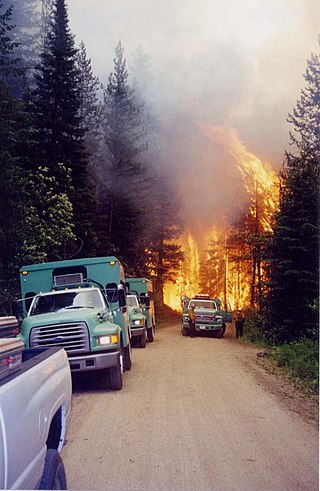
Enumclaw is a city in King County, Washington, United States. The population was 12,543 at the 2020 census.
Everett Community College (EvCC) is a public community college in Everett, Washington. EvCC educates more than 19,000 students every year at locations throughout Snohomish County, Washington, with most students and faculty at the main campus in Everett.

The Seattle Convention Center (SCC), formerly the Washington State Convention Center (WSCC), is a convention center in Seattle, Washington, United States. It consists of two buildings in Downtown Seattle with exhibition halls and meeting rooms: Arch along Pike Street and Summit on the north side of Pine Street. The former straddles Interstate 5 and connects with Freeway Park. The convention center was planned in the late 1970s and funded through $90 million in bonds issued by the state legislature.

Lester is a ghost town near Stampede Pass, just south of Snoqualmie Pass in King County, founded in 1892 by the Northern Pacific Railway. Lester is located along what is currently National Forest Development Road 54, on land owned by Tacoma Water, a division of Tacoma Public Utilities.

State Route 202 (SR 202) is a state highway in the U.S. state of Washington, serving part of the Seattle metropolitan area. It runs southeasterly for 31 miles (50 km) in the Eastside region of King County, connecting Woodinville, Redmond, Fall City, and North Bend. The highway begins at SR 522 in Woodinville, intersects SR 520 in Redmond and SR 203 in Fall City, and terminates at Interstate 90 (I-90) in North Bend. The entire highway is designated as the Cascade Valleys Scenic Byway, a state scenic and recreational highway.

Palm Beach County Fire Rescue is an ISO Class 1 department with 52 stations and one of the largest fire departments in the State of Florida. Palm Beach County Fire Rescue provides fire protection, Advanced Life Support, emergency medical services, technical rescue, hazardous materials' mitigation, aircraft rescue/firefighting, fire investigation, and 911 dispatching for unincorporated parts of Palm Beach County, Florida as well as 19 cities under contract.

State Route 169 (SR 169) is a state highway in the U.S. state of Washington, located entirely within King County. It runs 25 miles (40 km) from Enumclaw to Renton, passing through Black Diamond and Maple Valley. The highway, also known as the Maple Valley Highway, functions as a major rural and suburban route for the southeastern Seattle metropolitan area and connects several highways, including SR 410, SR 18, and Interstate 405 (I-405).
Enumclaw High School is a public school in Enumclaw, Washington. The school serves about 1300 students from Enumclaw as well as local unincorporated regions of King County and cities such as Black Diamond and Greenwater. The school's mascot is the Hornet; its colors are maroon and gold.

Auburn station is a train station in the city of Auburn, Washington, United States, served by S Line of the Sounder commuter rail network. It is located southwest of downtown Auburn and consists of two train platforms, a bus station, a parking garage, a public plaza, and a pedestrian bridge. The station has 633 parking spaces and is also served by Sound Transit Express, King County Metro, and Pierce Transit buses. Auburn station opened in 2000 and was built on the site of a former railroad station that was demolished in 1979. The parking garage and pedestrian bridge opened in 2003, and a second parking garage is planned to be built by 2027.

1000 Second Avenue is a 493 ft (150 m) skyscraper in Seattle, Washington. It was completed in 1987 and has 43 floors. Originally named the Key Tower and the Seattle Trust Tower for its largest tenants, it is the 23rd tallest building in Seattle as of 2021.

Issaquah Highlands is a planned community and mixed-use neighborhood in Issaquah, a suburb of Seattle, Washington, United States. The neighborhood, located northeast of downtown Issaquah at Grand Ridge on the Sammamish Plateau, was planned in the New Urbanism style and opened in 1998 after a decade of planning and construction.

Firefighting in the United States dates back to the earliest European colonies in the Americas. Early firefighters were simply community members who would respond to neighborhood fires with buckets. The first dedicated volunteer fire brigade was established in 1736 in Philadelphia. These volunteer companies were often paid by insurance companies in return for protecting their clients.

The Thirtymile Fire was first reported on July 9, 2001 in the Okanogan National Forest, approximately 30 miles (48 km) north of Winthrop, Washington, United States. The wildfire had been caused by an unattended campfire that spread rapidly in the hot and dry weather in the Pacific Northwest. Four firefighters were killed when the fire cut off their only escape route out of the narrow canyon.

Hillsboro Fire & Rescue is the municipal fire department for the city of Hillsboro in the U.S. state of Oregon. Founded in 1880, the department operates five stations with six companies. The department has 123 members and is led by Chief David Downey.

The Cinder Butte Fire was a wildfire that burned over 52,000 acres (210 km2) of Oregon rangeland during the summer of 2017. The fire began on 2 August 2017. It was determined to be human-caused since lightning was not present in the area prior to the initial fire report. The fire consumed rangeland vegetation and juniper woodlands in the area east of Glass Buttes in northern Lake County and then spread into northwestern Harney County. Most of the burned area was on public land administered by the Bureau of Land Management. Firefighters battled the blaze for over a week. At the peak of the firefighting effort, there were 496 firefighters working on the Cinder Butte Fire.
The 2019 Washington wildfire season officially began in March 2019.

The McGrath Cafe and Hotel, also known as The McGrath, is a commercial building in North Bend, Washington. Built in 1922, it was added to the National Register of Historic Places in 2002. The McGrath is also a contributing building in the North Bend Historic Commercial District of King County, Washington.

The first confirmed case relating to the COVID-19 pandemic in the United States was announced by the state of Washington on January 21, 2020. Washington made the first announcement of a death from the disease in the U.S. on February 29 and later announced that two deaths there on February 26 were also due to COVID-19. Until mid-March, Washington had the highest absolute number of confirmed cases and the highest number per capita of any state in the country, until it was surpassed by New York state on April 10, 2020. Many of the deceased were residents of a nursing home in Kirkland, an Eastside suburb of Seattle in King County.
The White Center COVID-19 quarantine site is a quarantine site in the unincorporated King County, Washington neighborhood of White Center, near Seattle, Washington, in the United States. Residents who are diagnosed with COVID-19 but can not be quarantined at home, but who do not need emergency medical care, will be housed there. Many of them are expected to be the homeless.

The 2020 Washington wildfire season officially began in March 2020. The season was a part of the 2020 Western United States wildfires. By September, wildfires had burned over 713,000 acres, 181 homes had been lost, and one death occurred as a result. The 2020 fire season saw more individual fires than in any other recorded year.
















